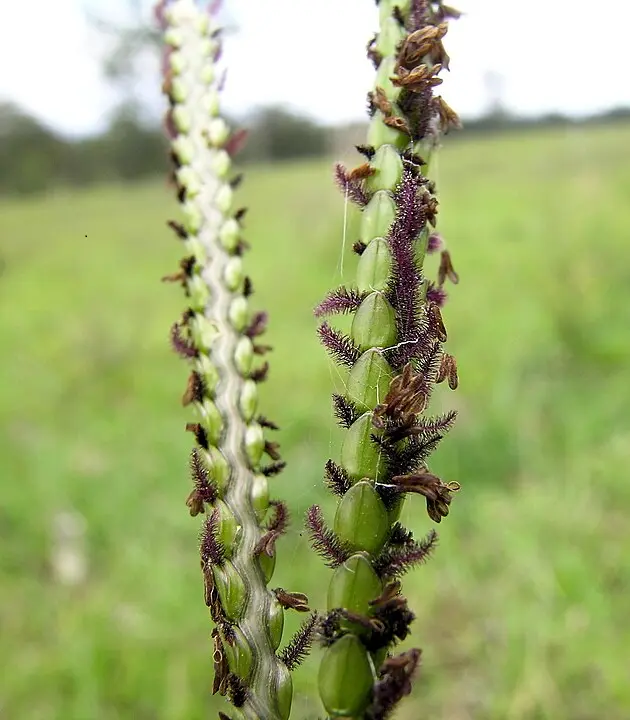
Soil Health & Fertilization
We unite suppliers and green industry professionals worldwide
The Easter Cactus (Rhipsalidopsis gaertneri) is here to challenge every stereotype. This tropical beauty isn’t about blistering heat and endless droughts—it's a rainforest native that thrives in humidity, shade, and well-timed neglect
By Victor Miller
|Published on June 12, 2025


A Cactus That Revels in Spring? You Bet!
Think cacti are just spiky desert dwellers? Think again! The Easter Cactus (Rhipsalidopsis gaertneri) is here to challenge every stereotype. This tropical beauty isn’t about blistering heat and endless droughts—it's a rainforest native that thrives in humidity, shade, and well-timed neglect. And as its name suggests, it puts on its grand floral display right around Easter, filling homes with vibrant pink, red, or orange blooms just when the world is waking up from winter.
Unlike its better-known relatives, the Christmas Cactus and Thanksgiving Cactus, the Easter Cactus has a more laid-back blooming schedule, waiting until early spring to show off. It’s also a symbol of renewal and fresh beginnings, making it a perfect addition to your home as you shake off the winter blues. But how do you keep this beauty happy? Let’s explore!
| Common Name | Easter Cactus |
| Scientific Name | Rhipsalidopsis gaertneri |
| Type | Epiphytic succulent |
| Bloom Period | Early spring (March-May) |
| Colors of flowers | Pink, red, orange, white |
| Light Requirements | Bright, indirect light |
| Soil Type | Light potting mix that drains well |
| Watering | Moderate, let the soil dry out a bit between waterings |
| Lifespan | Can live for decades with good care |

September 25, 2025
9 minute read
September 24, 2025
9 minute read
September 23, 2025
10 minute read
September 22, 2025
9 minute read


Join as a seller and connect with thousands of B2B buyers nationwide!
Sign Up

Bachelor's Button
Bachelor’s Button (Centaurea cyanus), or cornflower, has a bit of name that may bring to mind the flower of a free spirit or a romantic soul. Native to Europe but beloved across the globe for its bold, colorful blooms and ability to thrive in a variety of

Bahia Grass
Bahia Grass (Paspalum notatum) is an example of a plant that grows with not much work but yields an attractive, green lawn with superior durability.

Imperial Red Philodendron
An eye-catching foliage plant that brings a touch of elegance indoors and outdoors

Inaba Shidare Japanese Maple
A beautiful, lovely tree that adds grace to any landscape
The Easter Cactus is a tropical cactus as opposed to regular cacti meaning they like humid rather than dry environments and prefer indirect light. This plant is easy to take care of and will produce beautiful blooms for you every spring with only a few simple steps.
The Easter Cactus prefers bright, indirect sunlight. It thrives near an east- or north-facing window, where it takes in soft light during the morning hours but is protected from intense afternoon sun. Direct sunlight for too long will turn its fleshy stems reddish or even burn them, while too little light can prevent flowering. If growing in artificial light, a fluorescent or equivalent LED grow light works well.
You will need a lightweight, well-draining potting mix. Use a mix for orchids, succulents or cacti. If potting soil is used, combine perlite, sand, or fine bark to improve aeration and drainage. The Easter Cactus like a slightly acidic environment (pH 5.5-6.5), so try to avoid highly alkaline mixtures.
Unlike desert cacti, the Easter Cactus likes to be watered more consistently. The trick is to maintain even moisture in the soil, never sogginess. Let the top inch of soil dry between waterings, then water until it runs out of the bottom of the pot. Water less in fall for flower buds to form. Overwatering can lead to root rot, so ensure the pot has good drainage.
Pruning an Easter Cactus is easy and productive, leading to fuller growth and more flowers! Late spring, after blooming has stopped, tends to be the ideal time to prune.
To prune, gently twist or snip off segments at the joints.Pruning out older or leggy stems shapes the plant and encourages new growth. You can even propagate the segments you removed to create new plants. Pruning every 1 or 2 years keeps your cactus looking bushy and healthy.
With the Easter Cactus, propagation is as easy as snipping some stems to create new plants. The ideal time to do this is in late spring or early summer, once the plant has finished flowering.
To propagate:
Since this type of cactus is a popular houseplant, it flourishes in containers with good drainage. A terra cotta or ceramic pot with a drainage hole is best, because excess moisture can escape.
Avoid compacted roots by using a light potting mix. Every 2-3 years repot the Easter Cactus (ideally in the late spring) to add fresh soil and give the roots more space to grow. If you see roots coming out of the drainage holes or you’ve noticed stunted growth, it’s time for a pot that’s slightly larger.
Easter Cactus requires a fall’s cooling period to stimulate blooming.From October to December, reduce watering and keep the plant in a cooler environment (50-60°F / 10-15°C). This dormant period helps trigger flower bud development. This rest period is necessary to stimulate the formation of flower buds.
Do not place it near heat vents, radiators or drafty windows either; sudden fluctuations can lead to bud drop. After a few weeks, start to sprinkle more water at lower temperatures, prepare to return the plant to higher temps for spring flowers.
The Easter Cactus blooms in early spring, producing vibrant, star-shaped flowers that last for several weeks. For additional blooms, here are the three most important steps:
If cared for correctly, the Easter Cactus will reward you with eye-catching flowers each spring.
While fairly tough, the Easter Cactus can face a few issues:
Monitoring your plant’s environment and moisture levels helps avoid these common issues.
The Easter Cactus is a gorgeous spring bloomer that is easy to care for and long lasting, making it a must have for plant lovers. Whether you’re growing it on a windowsill or sharing cuttings with friends, this lovely plant has been spreading joy year after year, just in time for Easter!
The individual bloom stays for 2-3 weeks and spread for about a month or more.
No. Closely related, the Easter Cactus flowers in spring and the Christmas Cactus in winter. They also have different stem shapes.
Yes, but only during warm months (over 50°F/10°C) and in shaded areas. In autumn, it should be stored inside before the weather turns cold.
By spring and summer, diluted feed with a balanced liquid fertilizer once a month promotes growth and flowering. Do not fertilize in fall and winter.
If you take care of it, it can live for decades, and even become a family heirloom!

Soil Health & Fertilization
Victor Miller

Pest Identification & Prevention
Victor Miller

Lawn Care Tips & Maintenance
Victor Miller

Soil Health & Fertilization
Victor Miller

Smart Irrigation Systems
Victor Miller

Patios, Walkways & Driveways
Victor Miller

Soil Health & Fertilization
Victor Miller

Pest Identification & Prevention
Victor Miller
My Account
Our team is always here to help.
We are open Monday - Friday, 9:00 AM to 4:30 PM PST.